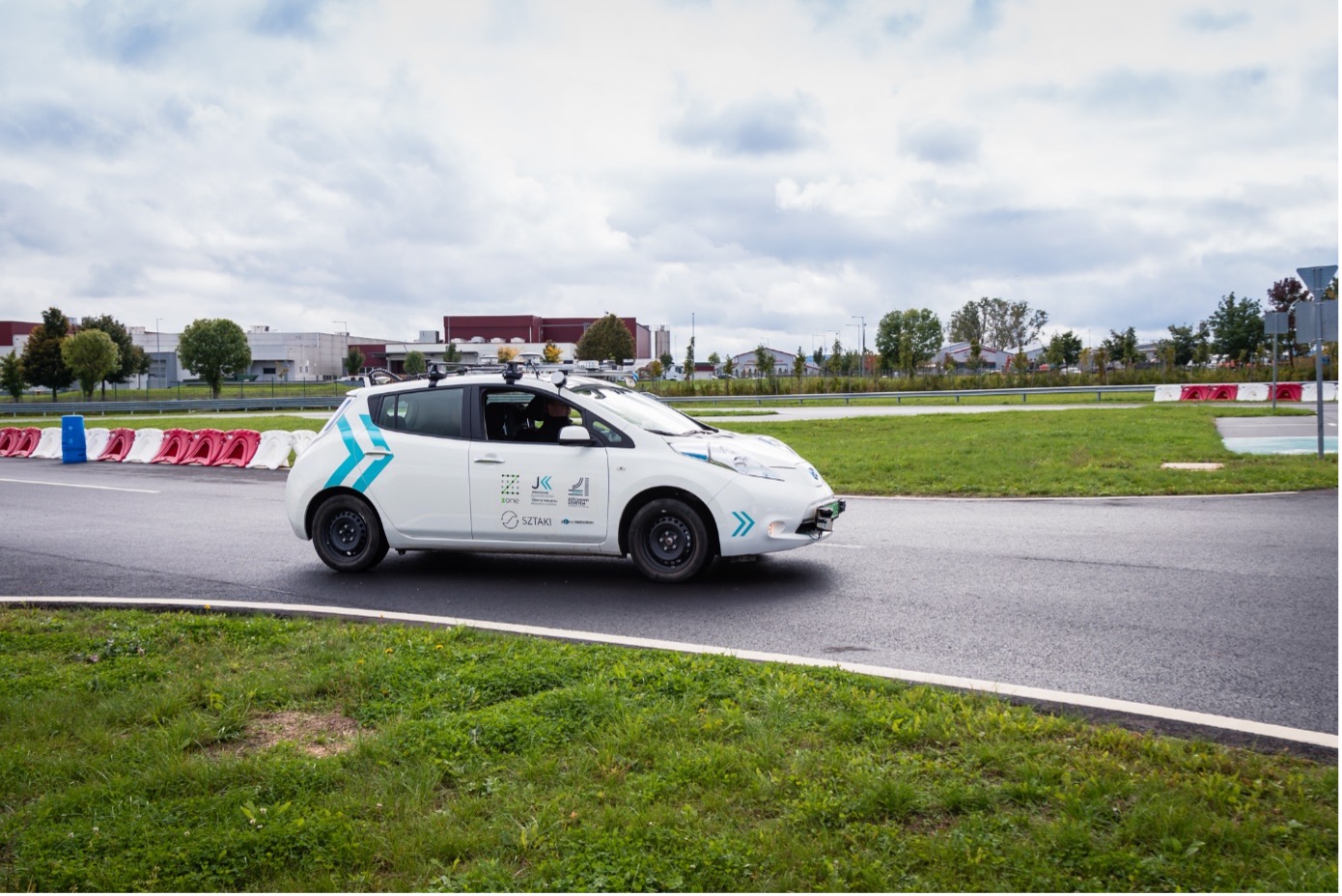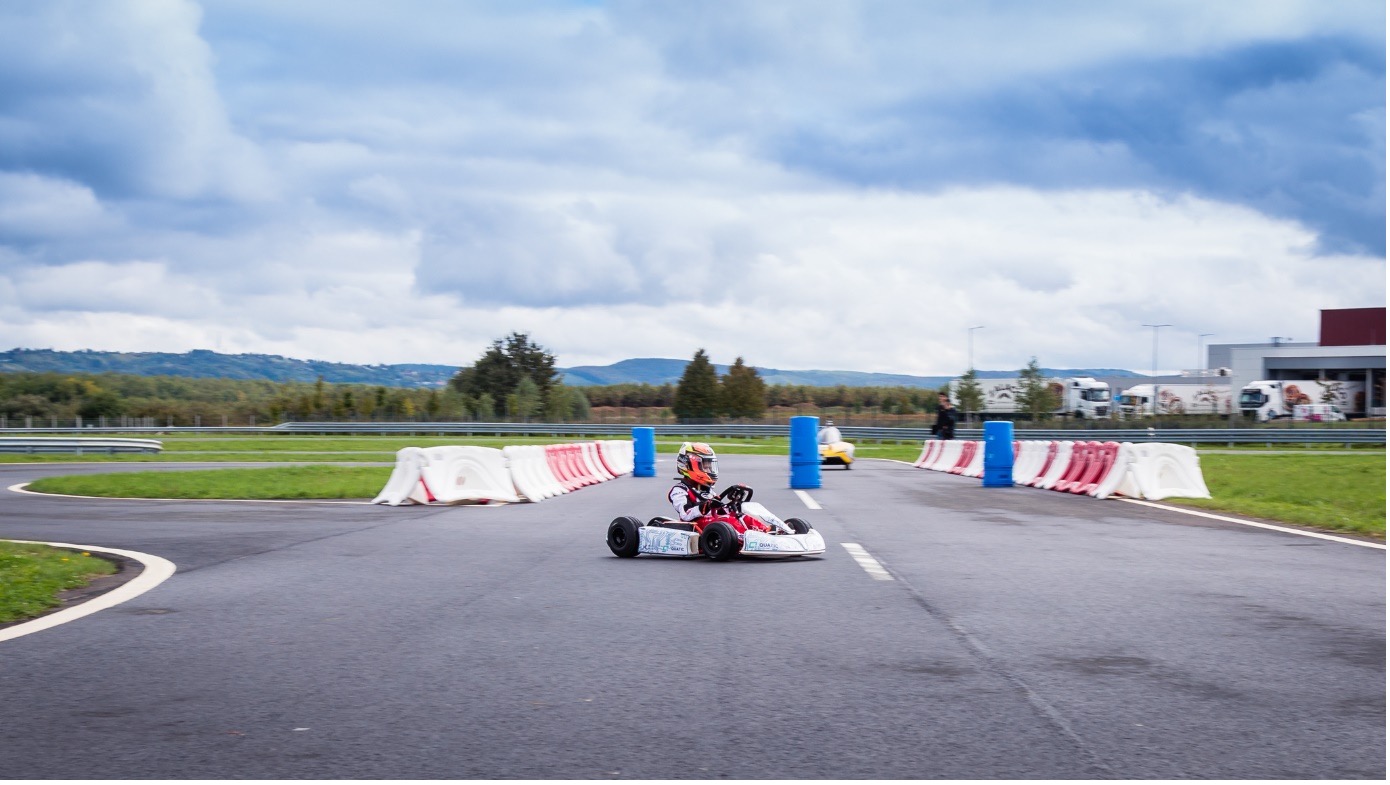Széchenyi István University presented its research on autonomous transport systems
An innovation day presenting the results of the latest research was held for the fourth time at the ZalaZONE automotive test track in Zalaegerszeg. At the programme, the Automotive Research Centre of Széchenyi István University also demonstrated its innovations in the field of autonomous transport. Visitors were able to see, among other things, the self-developed test track marking robot, the sensory detection and avoidance of obstacles, and a demonstration by SZEnergy, the world record-breaking student team of the Shell Eco-marathon. The university's Centre for Digital Development and Talaris Interface Ltd. presented a joint development project to fully control a drone wirelessly using sensors integrated into shoes.
The aim of Széchenyi István University of Győr is to contribute to the competitiveness of the region by creating an international, high-quality education and research environment. In this spirit, it is continuously strengthening its role alongside ZalaZONE, the most modern automotive test track in Central Europe. An important step in this effort was the recent inauguration of two new buildings, one for innovation and one for accommodation.

One focus of the Automotive Research Centre at Széchenyi István University is self-driving and autonomous transport (Photo: Csaba József Májer)
The institution is a regular participant in the annual ZalaZONE Innovation Day. At this year's event, the Automotive Research Centre of Széchenyi University presented the results of its autonomous transport research. The in-house developed, robotised test track marking platform was presented, which placed special markings on the track on a digital map provided by the user. These were identified and then approached by small robotic platforms, demonstrating collaboration between robots.

The robotic test track marking platform is another innovation developed in-house (Photo: Csaba József Májer)
Staff from the Centre for Automotive Research also demonstrated a battery diagnostic system, and the in-house developed radar-based emergency brake warning system was also visible or rather audible. The latter indicated danger when the stationary vehicle was approached by another vehicle at a speed of 30-40 km/h. Also presented at the event was an electric go-kart from the cooperation between Willisits Engineering Office Ltd., Széchenyi István University and Quatic Ltd. in which the drivetrain is also an own development. n this context, the public could learn about the motor sport ambitions and competences of the University of Győr.
The electric car development student team SZEnergy Team of Széchenyi István University achieved worldwide success this summer: it won the silver medal at the Shell Eco-marathon competition for self-driving car development teams, while it won Europe's largest energy efficiency competition with a world record. The team used their electric vehicle to perform autonomous parking manoeuvres and autonomous obstacle avoidance tasks on the Zalaegerszeg test track.

The University of Győr also has strong competences in the field of motor sports (Photo: Csaba József Májer)
A similarly spectacular demonstration showed the audience how to avoid obstacles using a sensor function. The vehicle control tasks were developed by the Automotive Research Centre, while the environmental sensing procedures were developed by the Eötvös Loránd Research Network Institute of Computer Science and Automation (ELKH SZTAKI).
The Digital Development Center of Széchenyi István University presented the wireless control of a drone with the help of sensors integrated in shoes, which is being implemented in a joint development with Talaris Interface Ltd., in addition to the car driven by remote control from Győr on ZalaZONE. The interface developed in this way can be used to replace the traditional control unit/remote control. This allows the operator to perform several sessions at the same time.
The e-sport team of Széchenyi István University welcomed talented car simulator racers during the Innovation Day, on the occasion of the establishment of a new motorsport department at the institution. The simulators were located at the university's garages, where industry partners competed alongside the youngsters.











